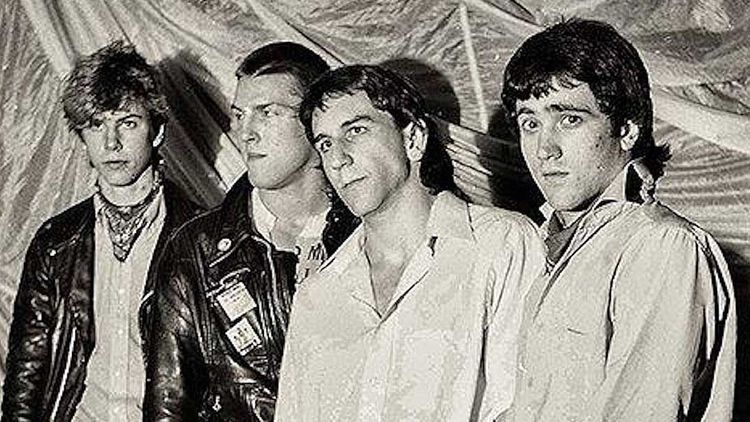“Death of the Old”: Ushering in a New Era of Digital Art

Grimes’ pitched-up vocals over a sunny hyperpop track serve as the theme for her digital art piece, “Death of the Old,” filled with decrepit castles in a Mars-scape, a colossal sword wedged deep into the regolith, and cherubs floating around a glowing, upside down cross. This is just one work in the ten-piece collection “War Nymph,” released for auction by future-pop artist Grimes on February 28th.
The auction in its entirety yielded Grimes just over $5.8 million in less than 20 minutes, with the majority of the sales coming from two works, “Earth” and “Mars,” selling 700 copies for $7,500 each. “Death of the Old” was the priciest single-ticket item, at nearly $389,000. The catch – all works in “War Nymph” are openly distributed online, viewable by anyone, anytime, free of charge.
Grimes’ otherworldly pieces were sold as non-fungible tokens (NFTs), a token which serves to guarantee the authenticity and singularity of the art they have been bought for. NFTs rely on the blockchain: a tamper-proof public ledger, one which allows anyone to track the NFT’s sale and consequent resale. This creates a way for the digital “ownership” to be tracked. Where an exclusive physical art piece would be carefully shepherded between investors, museums and storage facilities, the NFT acts as the digital proxy for this relocation process. A piece can then be resold on secondary markets for increased value, safely and neatly tracked on the blockchain.
The concept of the NFT was driven by a desire to bump value in digital art, both monetarily and societally. The inaugural sale of the first NFT, between artist Kevin McCoy and tech entrepreneur Anil Dash, took place on stage at an art-tech intersection conference in 2014. Dash purchased an abstract GIF from McCoy for just $4 in front of the live audience. This sale acted as proof of concept that digital art could be bought, tracked and resold, much like physical art.
NFT evangelists claim the cryptoart-currency releases artists from institutional bonds, removing the pretentiousness of galleries, museums and auctions. In actuality, only the most hyped can access these financial benefits as they create and control an artificial scarcity, ratcheting up the price of their art to soaring heights. The “outer”-circle NFT creators are still dragged down by the same dynamics of race, class, power, and gender, that the art and tech worlds are underpinned by.
In its current state, NFTs allow the rich to get richer, with only a sprinkling of outsiders filtering through the cracks. The NFT token as a concept does allow for visions of a more equitable art trading future, though a fundamental restructuring of platforms and reexamination of the original intent of NFT would be required to do so.
Yes, the NFT collections that make it BIG are theoretically just as gate-kept as any other world like fashion or high art, but there are plenty of creators exploring unique projects with NFTs. Digital artists now have a tool to value their art as high as they should, when before there was little opportunity to do so. NFTs at Sotheby's and Christie's! Amazing!
That being said, the technology comes with its own set of challenges: IP concerns, mainly. But as the world is becomes ever more connected, ever more consumed by connecting and sharing their lives with those of others, IP issues are bound to arrive. It's here in fashion, as fast fashion brands stealing the work of others and slap unlicensed art on anything cloth they can sell; in entertainment, with the abundance of torrent sites; in social media, even, where sounds and photos and ideas and art and everything is shared, recreated, remixed, ad infinitum.
The world evolves. Technology develops. There are growing pains. That doesn't mean we should throw up our hands and accept the faults, but instead we assess, do what we can, and move on.
The NFT fever has spread to the music industry as well. Popular rock group Kings of Leon recently opted to release their album as an NFT, the first band to ever do so. “When You See Yourself” was released simultaneously on streaming platforms and through NFT marketplace YellowHeart. Josh Katz, YellowHeart CEO, told “Rolling Stone” he has seen the “devaluation of music…a race to the bottom where, for as little money as possible, you have access to all of it.” Katz’ platform aims to interrupt this devaluation by granting the artist more freedom in pricing as well as release types.
In the case of the Kings of Leon album, the NFT version is realized in three tiers: the first, a special album package; the second, exclusive audiovisual art; and the third, a so-called “golden ticket.” Only 18 of these tickets were minted, and each provides the owner with four front-row seats to any Kings of Leon concert, for life.
As is, NFTs are predominantly inaccessible to the general population. Artists listing at unfathomably high prices aim only to garner the attention of the hype-driven investors, collecting their little digital NFT treasures like a hoard of gold in a dragon’s den. The vision of Kings of Leon and Katz, however, illustrates a hopeful future for equity in the music world. Offering listeners the option to support artists directly (and affordably), while circumventing the greedy streaming platforms like Spotify allows both listeners and artists to benefit.
There are many possibilities for the future of the NFT: the hype bubble could burst, leaving investors with worthless tokens of authenticity; prices could continue to surge, lining the pockets of the biggest artists and investors alike; or the excitement could level out, allowing smaller artists to use the tokens as a tool to better the art creation and consumption experiences. Regardless of which path NFT will take, the lifecycle of the cryptocurrency will be an engrossing facet of art to keep an eye on.
This piece was originally published on Mar. 17, 2021 in Horizons Newspaper, the student-run publication from the Embry-Riddle Aeronautical University's Prescott campus.




